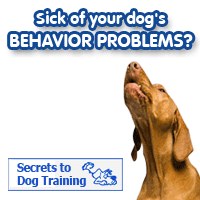Search and Rescue Dog Training
The more skills and training you undergo with your dog the more obedient he will be. So if you are aiming to train them as search dogs for your own reasons, or if you have intentions for your dog to be a professional search and rescue dog, there are particular training points that need to be established. If your dog is not intended to be a pro then the training may still come in useful as you may need these skills one day, and of course the training will help improve his obedience.
Your Dog’s Personality for Search and Rescue Dog Training:
This is a very important aspect regarding the suitability of your dog for search and rescue. Your dog needs to be calm, brave, adaptable, confident and obedient. These traits will allow your dog to work sensibly and thoroughly, confidence to think for himself, brave to cross certain terrains and deal with conditions, obedient to obey commands, and calmness with the ability to wait patiently.
Suitable Size of Dog for Search and Rescue Dog Training:
Generally the suitable search and rescue size dogs are from the larger breeds. It can be difficult for little dogs to locate someone and have them rescued, it is difficult for them to cover some types of terrain and ground conditions and distances too. Larger dogs tend to work better, you can train them to carry out individual tasks or a range of rescue skills.
There are all sorts of rescue dogs, some track ground scent, some track down people by sniffing the air. Avalanche dogs are just that, they track and locate people buried by snow.
Getting Started with Search and Rescue Dog Training:
To begin, you should hold your dog a couple of metres away from a friend holding a toy or treat. Your dog should be calm whilst waiting for your command. You then give the command to ‘find it’, and release your hold. Try not to allow your dog to chew on the target. You are aiming for your dog to retrieve not attack!
You then need to get your dog away from that immediate area, so again set a target to locate, increase the challenge by setting at further distances or covering the target with grass or snow, then give your dog the command to ‘find it’. It is important that your dog finds the target for his confidence and continued focus and interest.
You can teach your dog hand, voice and whistle signals to learn commands such as stop immediately, left, right, back, he’s in the right area, come back etc. This takes patience and a lot of work, make your lessons short and sweet, and praise your dog when he does well.
Of course if you want to teach your dog search and rescue skills, you can employ a professional trainer to help you. They will obviously have experience of dog training, and if they are good at what they do your dog’s training will progress.
As with people, all dogs are different and they will learn in different ways and some will achieve more than others. However a good trainer will be able to advise you on your dogs ability and potential, and they will help you to progress training helping you to overcome problems which can occur during training. However a good trainer is not free, but it can definitely be a cost worth paying.
Search and rescue dog training suits some dogs but not all, however having the right dog, and one that is obedient and enjoys his training and work is a great step towards your goal.
Click HERE For More Information On Dog Agility Training
You Can Also See Where Sarchie Has Been On His Adventures By Clicking HERE

Leave a Reply